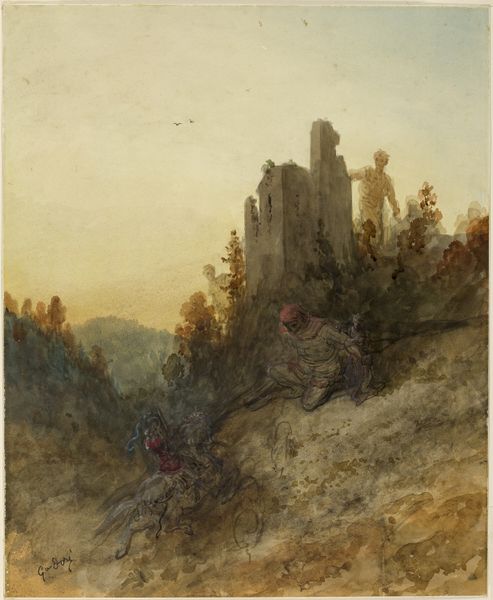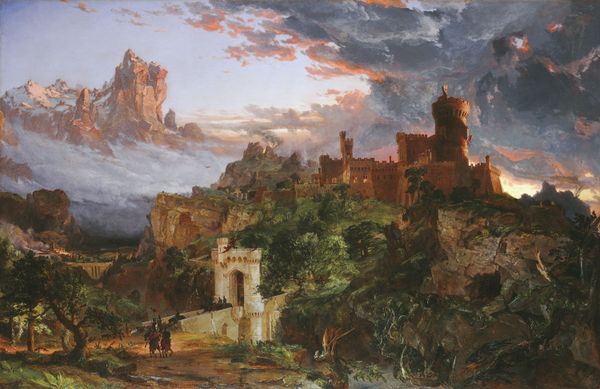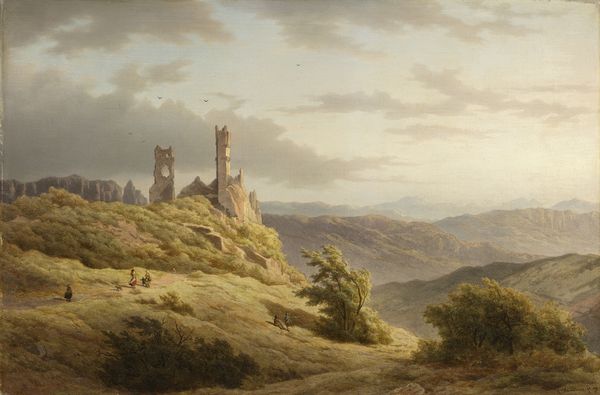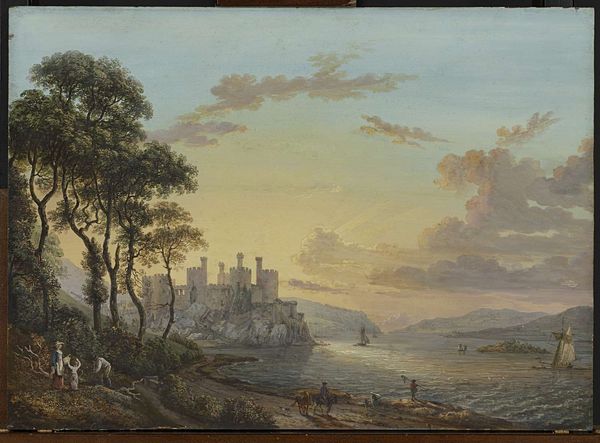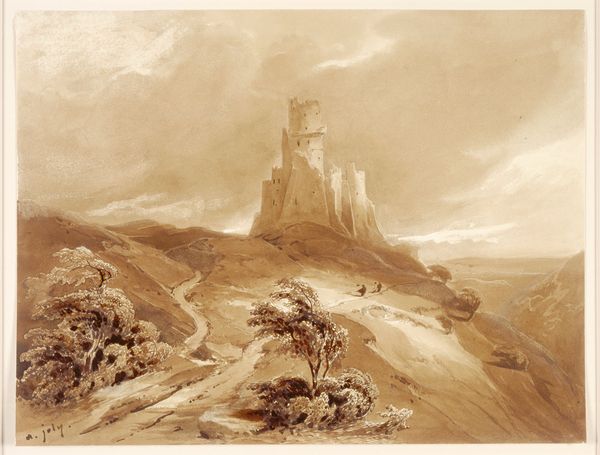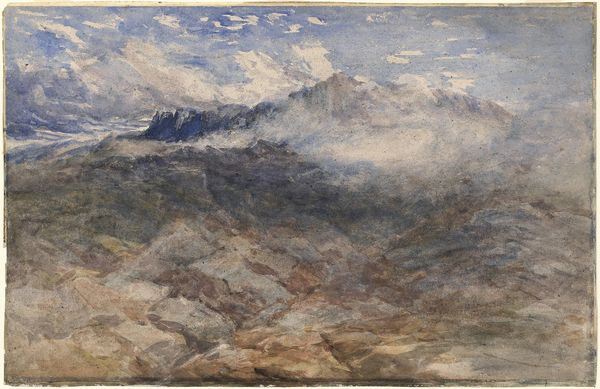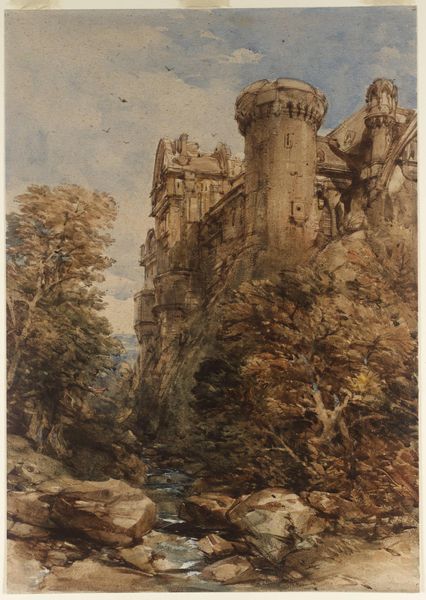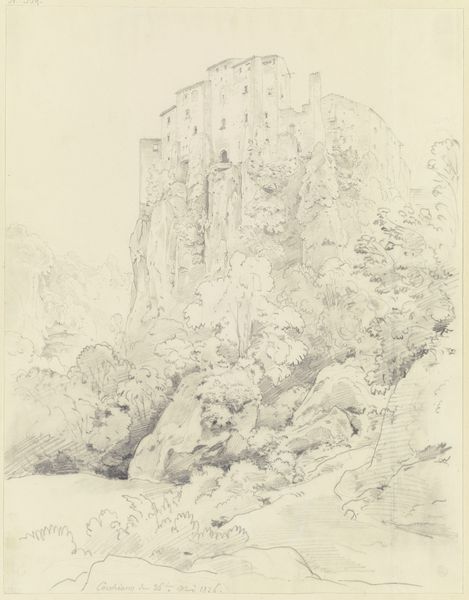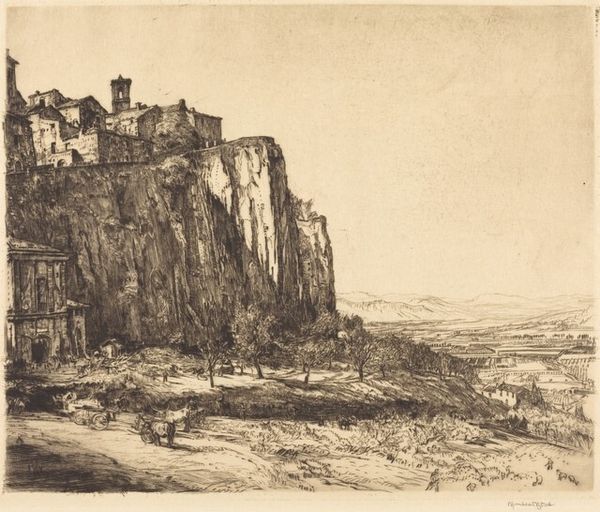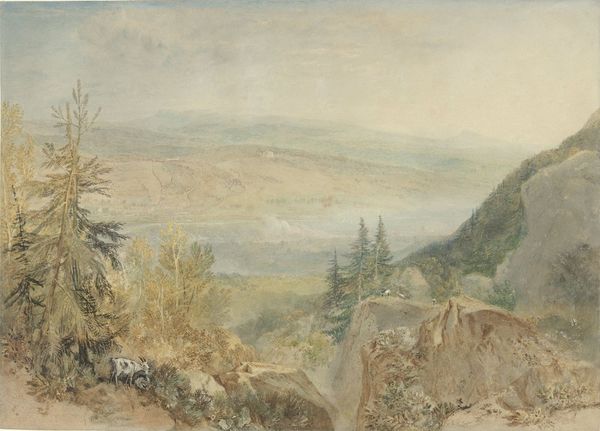
Dimensions: overall: 34.9 x 26.7 cm (13 3/4 x 10 1/2 in.)
Copyright: National Gallery of Art: CC0 1.0
Editor: Samuel Palmer's "The Enchanted Castle at Dusk," made around 1868 using watercolor, tempera, and drawing, has such a somber, romantic feel. How do you interpret this work? Curator: Looking at Palmer’s process is key. We see drawing underpinning the composition, asserting a direct connection to the landscape even in this fantasy scene. How does the blend of watercolor and tempera inform our understanding of the market for art in this period, and how it affected his techniques? Editor: I hadn't thought about the market. Was he consciously blending 'high' and 'low' art forms to appeal to a wider audience? Curator: Exactly. Watercolor was becoming more popular and accessible, while tempera had a longer history with fine art. Palmer's combination could be seen as an attempt to navigate and perhaps even challenge these categories. He's working with readily available materials. What does the crumbling castle convey about societal changes at the time, if anything? Editor: Perhaps the decline of feudalism, with a longing for a romanticized past, represented in these readily accessible media, democratizing access to the vision, the ideal... Curator: Precisely! And consider the labor involved in creating such detail. The mass production of paints allows a new type of artist, even a new consumer, to flourish. Do the birds signal freedom? Or perhaps even, the opposite— something ominous? Editor: It's a powerful blend of materials and meaning! I will consider the economic structures underpinning art more carefully going forward. Curator: Likewise! Considering how the labor and materials interact truly changes how we view the final piece.
Comments
No comments
Be the first to comment and join the conversation on the ultimate creative platform.
